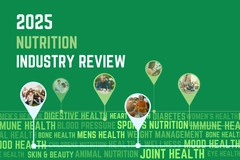Water contamination warning from the UNICEF, triple threat puts 190 million children at risk

20 Mar 2023 --- UNICEF has published a report showing that across ten African countries, 190 million children are at the highest risk of diseases related to the “triple threat” of inadequate water, sanitation and hygiene (WASH).
“Africa is facing a water catastrophe. While the climate and water-related shocks are escalating globally, nowhere else in the world do the risks compound as severely for children,” says Sanjay Wijesekera, director of programs at UNICEF.
“Devastating storms, floods, and historic droughts are destroying facilities and homes, contaminating water resources, creating hunger crises, and spreading disease. But as challenging as the current conditions are, without urgent action, the future could be much bleaker,” Wijesekera continues.
Western and Central Africa
According to the analysis, Western and Central Africa are the most climate-impacted and water-insecure regions worldwide. The triple threat is most critical in Benin, Burkina Faso, Cameroon, Chad, Côte d’Ivoire, Guinea, Mali, Niger, Nigeria and Somalia.
 Western and Central Africa are the most climate-impacted and water-insecure regions worldwide.Armed conflict further escalates the situation, which worsens children’s access to clean water and sanitation. All ten countries are classified as fragile or extremely fragile by the Organization for Economic Cooperation and Development as conflicts threaten to reverse WASH progress.
Western and Central Africa are the most climate-impacted and water-insecure regions worldwide.Armed conflict further escalates the situation, which worsens children’s access to clean water and sanitation. All ten countries are classified as fragile or extremely fragile by the Organization for Economic Cooperation and Development as conflicts threaten to reverse WASH progress.
Burkina Faso has experienced increased attacks on water facilities as a strategy to destabilize communities. In 2022, 58 water points were attacked, causing 830,000 people to lose access to safe drinking water, half of whom were children.
Across the ten countries, two-thirds of children lack access to essential sanitation services, and one-third don’t have access to clean water. One-quarter of children are required to practice open defecation, and three-quarters cannot wash their hands because of a lack of soap and water.
This leads to the highest disease burden of child deaths from WASH-related diseases. The UN says that 1,000 children below five die daily from WASH-related diseases, and two out of five are in these ten African countries.
Climate threat lurking
The same countries are also placed in the top 25% of countries with the highest exposure to climate threats. Compared to the global average, there is a 1.5 times faster increase in temperatures, accelerating pathogen replication in West and Central Africa.
“While we have the tools, evidence and solutions to meet global goals, the challenge is immense. Millions of children today face a triple burden of lacking access to basic water, sanitation and hygiene, death from diseases related to unsafe water, sanitation and hygiene, and increasing climate threats, including water scarcity, heatwaves, flooding and cyclones that make their already fragile services even harder to access,” reads the report.
“We know where the greatest challenges lie. Ten countries – with a combined population of over 190 million children – face the heaviest burden,” it continues.
Another factor accelerated by climate change is the deadly yet preventable bacterial disease Cholera which is usually spread through water. Cholera is primarily a threat to children suffering from malnutrition, and climate-related shocks will spread the disease as access to clean water decreases. Cholera is primarily a threat to children suffering from malnutrition.
Cholera is primarily a threat to children suffering from malnutrition.
The report stresses that between 2010 and 2021, 97% of cholera outbreaks occurred in the countries with the highest limitations to water and sanitation services.
Across regions
Economic inequality has previously been highlighted as a driver for malnutrition, affecting women and children the most.
The report details the distribution of child deaths from inadequate wash below five years of age worldwide in 2019. Worldwide a total of 394,802 children died and 254,976 of those were in Sub-Saharan Africa alone. Additionally, it totaled 15,011 in Northern Africa and Western Asia combined, amounting to 269,987 (68%) occurring in the region.
The Asian continent also had high numbers. Central and Southern Asia totaled 98,410 deaths and Eastern and South-Eastern Asia 19,186.
In Europe and Northern America combined, 526 children died, and six in Australia and New Zealand.
By Beatrice Wihlander












